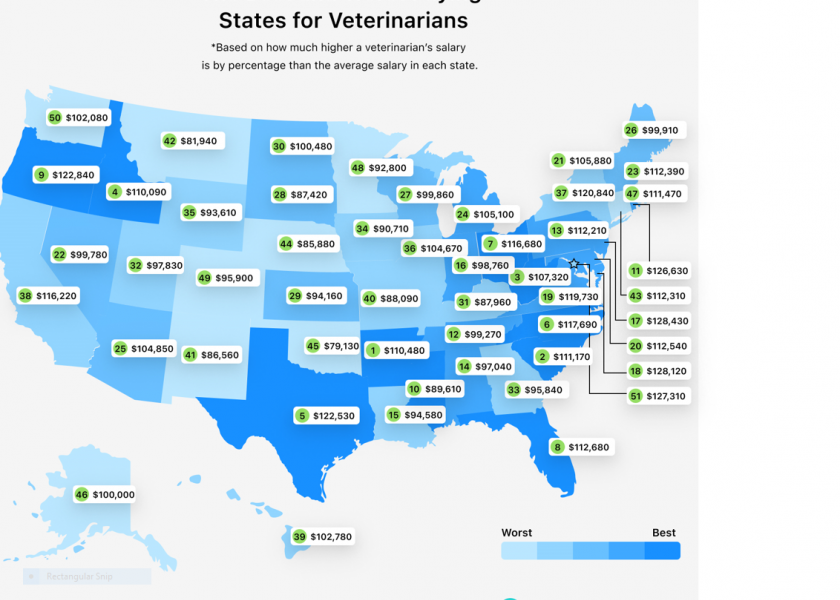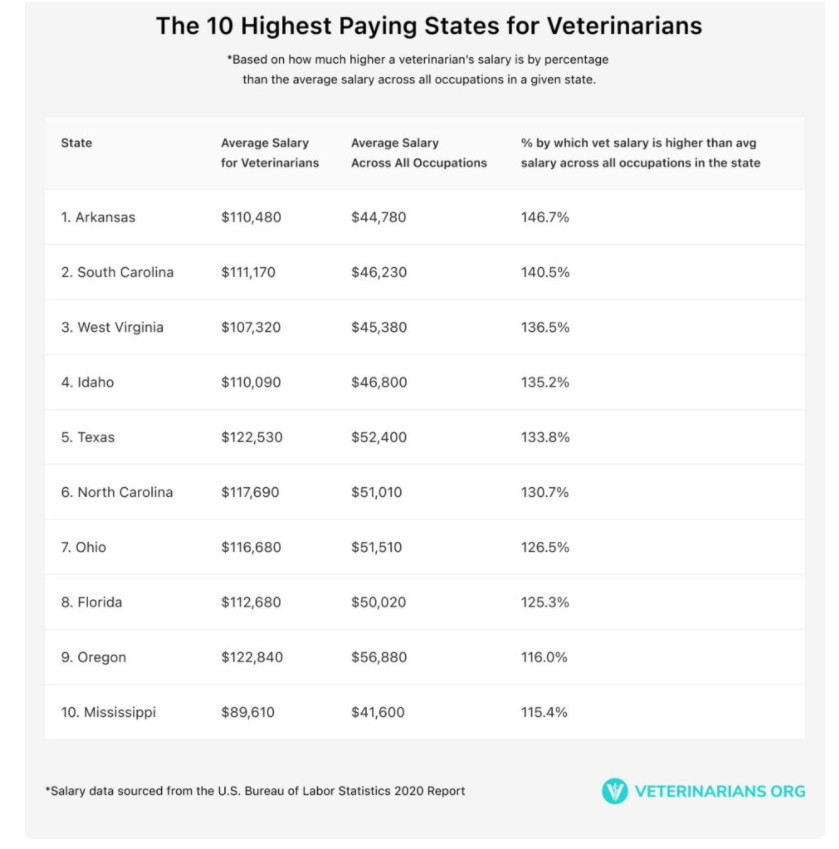How Does Your Take-Home Pay Stack Up?

A new report from Veterinarians.org details what it says are the “best and worst paying states” for veterinarians.
In 2020, the average pay for all veterinarians (not bovine specific), according to the U.S. Bureau of Labor Statistics, was $108,350. That is nearly double the average salary of all other occupations in the U.S. ($56,310).
The U.S. Bureau of Labor Statistics annually publishes comprehensive resource materials for each occupation within the U.S. economy. These guides detail the average annual wage for each occupation and also includes resources regarding projected growth outlooks, state and area data around employment and wages, and information about degree and licensing requirements.
For the purpose of this study, the Special Reports Team at Veterinarians.org analyzed the Bureau’s 2020 Report on Veterinarians with a specific focus on the annual mean wage within each state for veterinarians. The Team then compared this figure with the annual mean wage across all occupations in each state. Based on this value, each state was assigned a percentage, which signifies how much higher a veterinarian’s salary in that state is compared to the state’s average annual salary.
For example: veterinarians in Arkansas make $110,480 a year. The average salary in this state across all occupations is $44,780. This makes a veterinarian’s salary 146.7% higher than the average salary in the state, putting Arkansas as the #1 highest paying state for veterinarians in the U.S.
To account for the typical variations in annual mean wage found across different regions in the U.S. (e.g. a veterinarian’s salary in Oklahoma amounting to $79,130 vs. a veterinarian’s salary in New York totaling $120,840) the Special Reports Team at Veterinarians.org analyzed three figures:
• 1: The average annual salary for a veterinarian in each state
• 2: The average annual salary across all occupations in each state
• 3: The percentage by which a veterinarian’s salary is higher than the average salary in each state
The Team’s rankings on highest and lowest paying states are based on the third figure in particular: the percentage by which a veterinarian’s salary is higher than the average salary in each state. The below map numbers all U.S. states (and the District of Columbia) on a scale of 1-51, with 1 representing the highest paying state for veterinarians and 51 indicating the lowest paying state for veterinarians. The dollar values displayed represent the average veterinary salary in that state.
Overall, veterinarians across the nation are earning exceptionally great incomes. The lowest paying state for veterinarians (Washington) still sees a veterinary salary that’s over 50% higher than the state’s average salary. And when focusing solely on the dollar value of take-home pay, veterinarians in Oklahoma (where a vet’s average annual income is the lowest in the nation at $79,130) are still making almost 30% more than the national average salary across all occupations.








